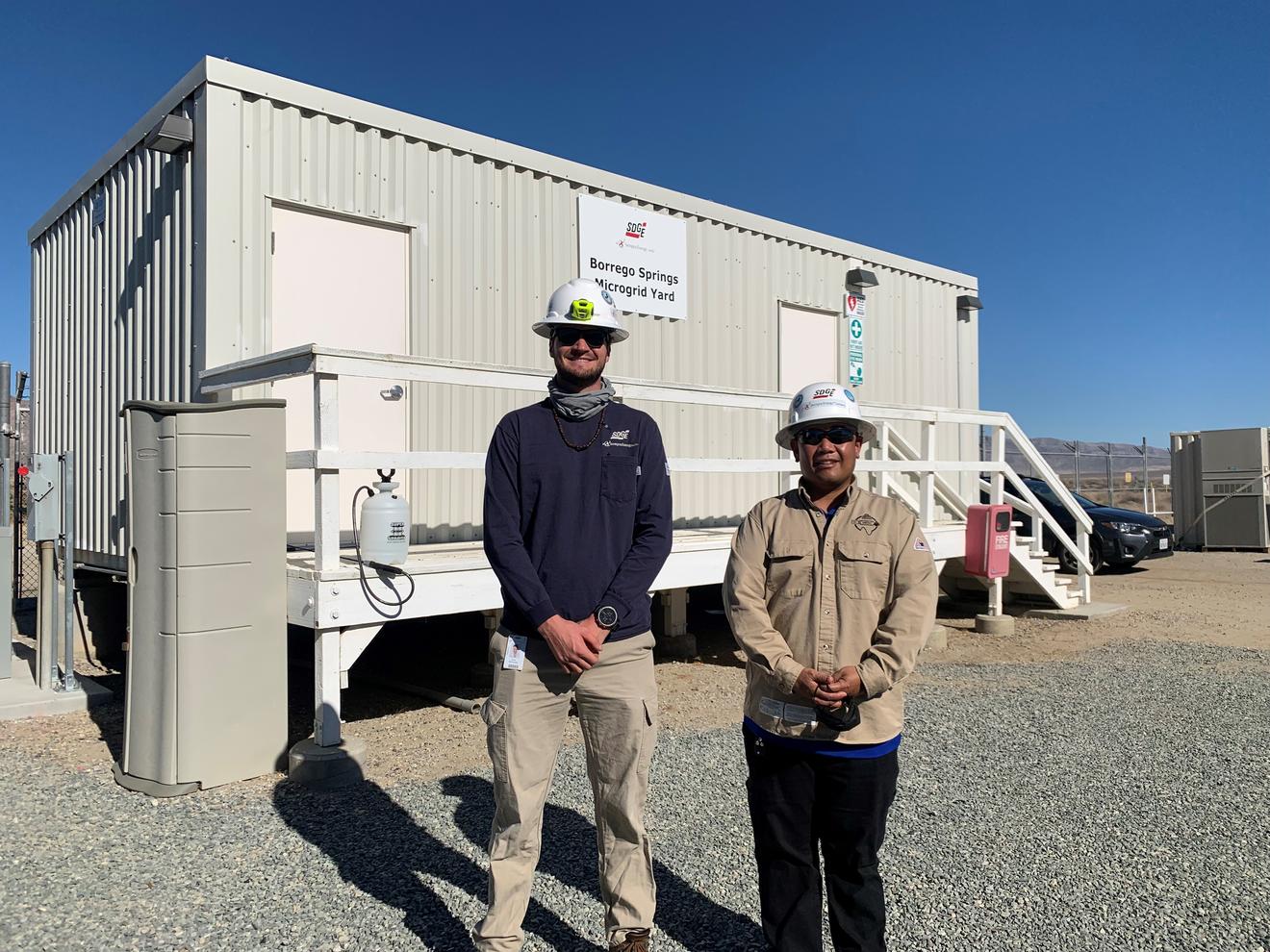As power outages and extreme weather events have become more frequent, microgrids have emerged as a solution in recent years
Essentially a mini power grid, microgrids leverage energy resources such as solar arrays, generators and energy storage to continue to provide power to specific communities, neighborhoods or critical resources if adverse weather or other conditions cause an outage on the larger grid. A microgrid can “island” or operate entirely independently of the regional grid to provide backup power during outages or emergencies or run parallel to the grid during normal conditions.
Our company built the first utility-scale community microgrid in America in Borrego Springs. The Borrego Springs Microgrid uses various technologies, such as local power generation, onsite energy storage, and automated switching to create a robust, resilient backup system that dynamically reacts to changing environmental and grid conditions.
This is incredibly important for remote communities like Borrego Springs, which previously relied on a single transmission line and distribution circuit for power and where residents must contend with extreme heat and monsoonal rains. But, thanks to a $4.5 million grant from the US Department of Energy’s Solar Energy Technologies Office (SETO), the Borrego Springs Microgrid will soon run on 100 percent clean energy.
Technologies that make a microgrid
Microgrids generally include generating, storing, and converting energy for distribution to the local community. Using Borrego Springs as an example, the microgrid consists of an array of batteries that can hold up to 1.5 MW of Direct Current or DC. Microgrids also include technology to convert DC to Alternating Current (AC), which powers a home.
A microgrid must also have a way to generate power locally. In Borrego Springs, this is accomplished by drawing excess solar power from local residential rooftop systems and sometimes connecting to third-party solar plants, in addition to conventional energy generation and storage. In addition, a microgrid can have backup methods such as a diesel generator to help supplement power and systems to help regulate voltage.
We recently announced that Borrego Springs would be the site of one of the company’s green hydrogen pilots. Here, excess solar energy generated locally will be turned into hydrogen, safely stored in fuel cells and then converted back to electricity when needed. The fuel cells can also hold energy longer (up to eight hours) to help with microgrid reliability.
Operationalizing a microgrid
Microgrids are an innovative way to keep power flowing during planned and unplanned outages. But it is important to remember that a microgrid is designed to complement the greater smart grid rather than replace it.
The Borrego Springs Microgrid can only carry peak load for the community during daylight hours when the sun is shining brightly. Without solar support, the microgrid cannot carry the full load at night. If an outage occurs at night, microgrids can help power critical facilities key to the health and safety of the community, like the sheriff and fire stations, schools, assisted living facilities, essential stores and medical/healthcare centers.
It is also essential to recognize that any microgrid takes some time to ramp up and deliver power to a community – it takes more than the press of a button. Operationalizing a microgrid requires careful coordination and planning. Additionally, maintaining the microgrid involves constant monitoring to fine-tune and balance customer demand and energy generation from local renewable sources, onsite generators and storage systems. A microgrid necessitates the careful management of highly skilled professionals that the regular power grid demands.
Transitioning back to the larger smart grid
In an outage, it can take a few hours to transition the community back to the larger grid. This is particularly true for unplanned outages because crews need to inspect utility poles and overhead lines to check for damage before restoring power. While it is never convenient to be without energy service, our company prioritizes safety, which means taking time to thoroughly patrol the line to find and repair any problem areas before re-energizing the community. Sometimes this process can take up to four hours, depending on the weather.
Please visit sdge.com/microgrid or watch the video above for more information on microgrids.
Meet Laurence Abcede, Distributed Energy Resources Manager at SDG&E

Abcede joined our company in 2000 and has been working on our Borrego Springs Microgrid since 2016. While in school for engineering, he pursued a concentration in power systems and controls and developed a keen interest in power electronics and inverter-based resources, like energy storage systems and electric vehicles. He reports that he loves working on the Borrego Springs Microgrid and feels fortunate to woe part of a talented and conscientious team.
"We are all very passionate about developing and deploying innovative technologies to strengthen the resiliency of our electric system and enhance the customer experience," shared Abcede.
You can often find Abcede enjoying time with his family camping, one of their favorite activities in his free time.